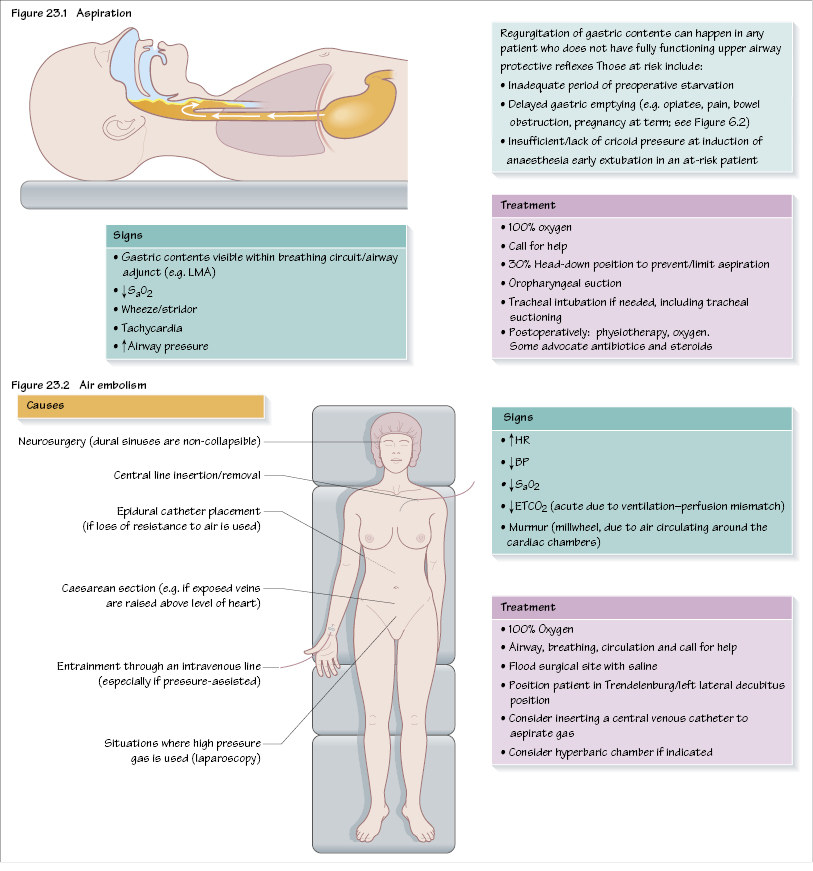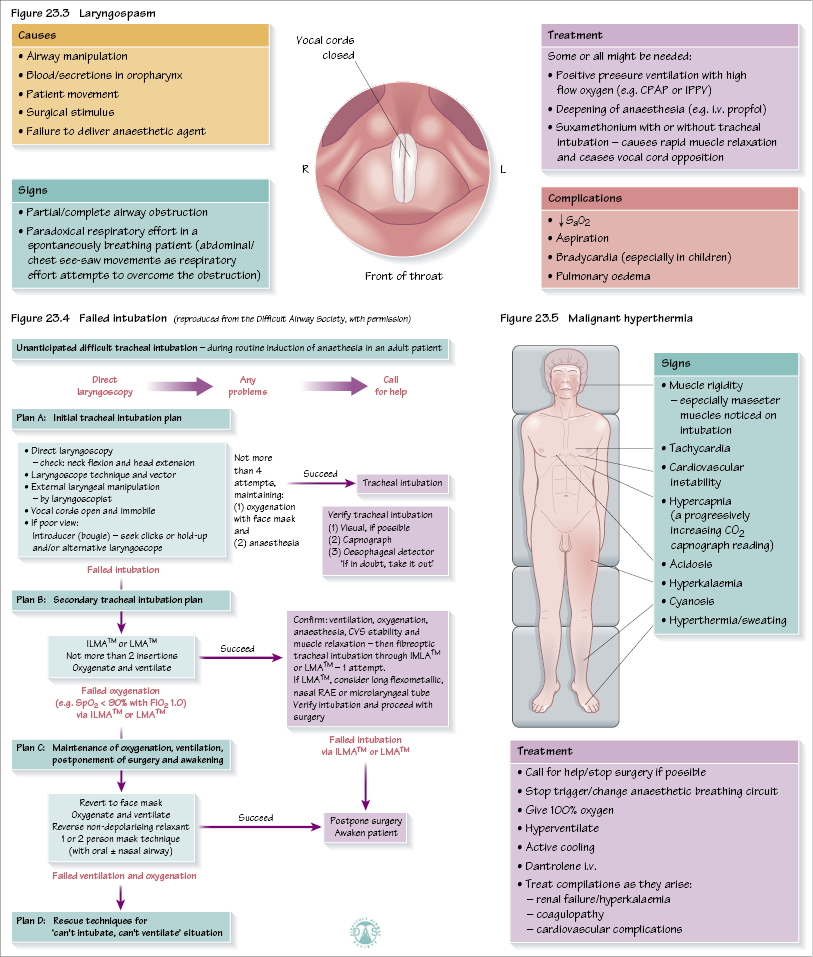23
Anaesthetic emergencies in the operating theatre


Emergencies are not common but when they do occur they are often life threatening and require immediate action. They are often unforeseen and may have a non-specific presentation. Moreover, many need prompt diagnosis and treatment if disaster is to be averted. Some disasters happen ‘out of the blue’ but some occur or are recognized late due to other factors, such as distraction, tiredness, work and time pressures, poor communication, etc.
Factors in the mnemonic COVER ABCD accounts for approximately 95% of critical incidents. It is an example of an algorithm that can be used as an aide-mémoire to work through during an acute event. Always ensure senior help is sought early.
Aspiration
Inhalation of gastric contents can occur in patients who do not have fully functional upper airway reflexes (Figure 23.1). Impaired protective airway reflexes can be due to:
- a reduced conscious level from any cause;
- neuromuscular blocking agents;
- central nervous system disorders, e.g. stroke, bulbar palsy.
General anaesthesia obtunds airway reflexes that normally function to protect the respiratory tract from soiling by regurgitated vomitus. Patients for elective surgery are starved for a minimum of 6 hours to minimize the risk of thi/>
Stay updated, free dental videos. Join our Telegram channel

VIDEdental - Online dental courses


